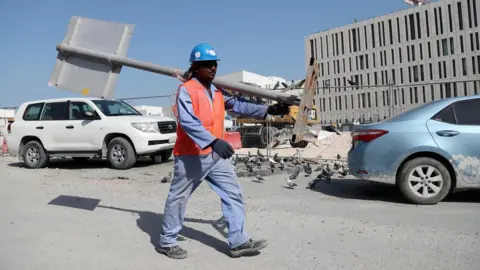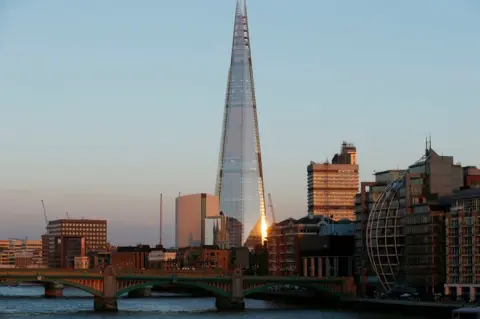Five facts about Qatar you might not know
 AFP
AFPThe sovereign state of Qatar is currently at the centre of a storm, with its neighbours cutting off diplomatic relations.
But this is not a country which often finds itself dominating the headlines.
So what do people actually know about Qatar, apart from it hosting the football World Cup in 2022?
Here are five facts to get you started.

Men outnumber women - hugely
In a country of about 2.5 million people, there are fewer than 700,000 women.
This imbalance can be attributed to Qatar's sudden population explosion: this is a state built by immigrants, who are overwhelmingly young and male.
The promise of a job has meant people have flooded into Qatar - which is about the same size as Yorkshire - in recent years, taking its population from less than 700,000 in 2003, to an estimated 2.5 million in 2016.
 AFP
AFPWhile there are female migrants, the vast majority are men building the infrastructure needed for the upcoming World Cup.
They come from all over the world, although the largest numbers come from India and Nepal, making Hindus the third largest religious group in the country, after Muslims and Christians, according to the CIA's World Factbook.
However, despite the promise of work and a better future, several reports in recent years have said migrants are being forced to work in appalling conditions, with more than half still living in labour camps around the country.
Qatar has promised to improve life for its workers, but Amnesty International's report for 2016/17 said they "continued to face exploitation and abuse".

London's biggest landlords?
Qatar has been busy over the last decade or so buying up large swathes of London.
Its portfolio includes, but is not limited to, the Shard, Harrods, Chelsea Barracks and the Olympic Village, as well having a stake in Canary Wharf.
 PA
PAAli Shareef al-Emadi, the country's finance minister, told the BBC in March he estimated the country had "more than £35bn to £40bn ($45bn to $51bn) of investments already in the UK".
What's more, Mr Emadi said the country was planning to invest another £5bn in the UK over the next three to five years - including more property.

Qatar really loves art
Qatar is known as a conservative country, yet, in the last few years it has sponsored a number of exhibitions - including hosting the somewhat controversial artist Damien Hirst's first solo retrospective in the Middle East, in 2013.
The same year Sheikha al-Mayassa bint Hamad bin Khalifa al-Thani - the sister of the emir, and head of Qatar Museums Authority - topped the Art Review's Power 100.
- Read more: Qatar's influence over the art world
At one time, it was rumoured she was spending up to $1bn a year on art, with work from Andy Warhol, Mark Rothko, Paul Gauguin and Paul Cézanne all making their way into the collection.
The country also boasts the Museum of Islamic Art in Doha, which opened in 2008. It is said to house one of the most comprehensive collections of Islamic art in the world, exhibiting works from across three continents and 1,400 years.

A rather large teddy bear
Qatar's love of art has spilled over from the museums and into its public spaces.
Indeed, anyone who has ever been through Doha's Hamad International Airport could not have missed the 23-foot yellow teddy sitting in the middle of the terminal.
Lamp/Bear was created by Swiss artist Urs Fischer more than a decade ago, is cast from bronze and weighs almost 20 tonnes.
 Getty Images
Getty ImagesAccording to Hamad International Airport's official description, the bear is a "playful piece that humanises the space around it and reminds travellers of childhood or precious objects from home".
But this playful piece did not come cheap: the cast bronze sculpture was bought at auction in New York for $6.8m (£5.3m) back in 2011.

Qatar has record riches - for some
How does such a small country pay for all this? Well, thanks to its oil and gas reserves, as well as some good investments, Qatar has the highest GDP per capita in the world.
In 2016, it was $129,700 (£100,500) - more than $20,000 higher than the next closest country, Luxembourg, the CIA's World Factbook said.
At the other end of the scale, Somalia's GDP was estimated to be just $400 per head.
However, Qatar's wealth is in no way equally spread. The former Emir, Sheikh Hamad bin Khalifa al-Thani, is reportedly worth $2.4bn. But migrants interviewed by the BBC in 2015 revealed they were earning as little as $350 a month.
